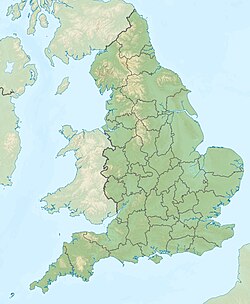| Bromsgrove Sandstone | |
|---|---|
| Stratigraphic range: Anisian ~ | |
| Type | Formation |
| Unit of | Sherwood Sandstone Group |
| Lithology | |
| Primary | Sandstone |
| Other | Shale, conglomerate, marl |
| Location | |
| Coordinates | 52°42′N2°18′W / 52.7°N 2.3°W |
| Approximate paleocoordinates | 15°36′N10°48′E / 15.6°N 10.8°E |
| Region | England |
| Country | United Kingdom |
The Bromsgrove Sandstone is a geologic formation of the Sherwood Sandstone Group in England. It preserves fossils and ichnofossils of Chirotherium barthii , and Chirotherium sickleri , dating back to the Middle Triassic (Anisian) period. [1]

